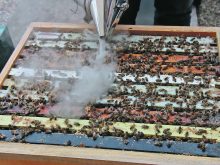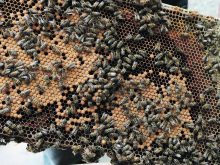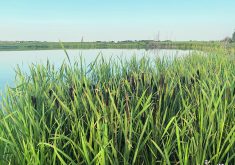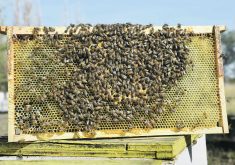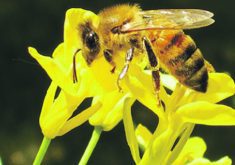After years of severe winter losses, Ontario bee colonies look great this spring as the vast majority of hives survived the winter.
On Tibor Szabo’s beekeeping operation, near Moffat, Ont., essentially every hive is still alive.
“I’m about 99 percent (survival),” said Szabo, Ontario Beekeepers’ Association (OBA) president.
Winter losses weren’t quite as low at Coneybeare Honey north of Fergus, Ont., but the bees are also in good shape.
“We’re probably around a 10 percent winter loss,” said Jim Coneybeare. “I’m hearing from a lot of guys (beekeepers), probably a five to 10 percent winter loss.”
Read Also

Farming Smarter receives financial boost from Alberta government for potato research
Farming Smarter near Lethbridge got a boost to its research equipment, thanks to the Alberta government’s increase in funding for research associations.
If losses are that low it will be a tremendous improvement from 2014 and 2015.
• Last year Ontario beekeepers lost 37.8 percent of their hives, much higher than the Canadian average of 16.4 percent
• In 2014 winter losses were a staggering 58 percent in Ontario, compared to 25 percent across Canada.
• Winter losses are defined as the number of hives that are viable at the end of winter, compared to the number of bee colonies stored in the fall
The primary reason for minimal losses this year was the warm fall and pleasant winter in Ontario, Szabo said.
“With honeybees, strong hives are independent of the weather,” he said. “Hives with smaller populations are (more) dependent on the weather for growth and survival…. When you have a mild winter they all make it.”
The high survival rate should provide a boost for Ontario’s beekeeping industry, which provides pollination for orchard crops in Central Canada.
“It’s definitely a shot in the arm…. Hopefully the high survival continues (through the summer),” Szabo said.
Bee winter losses have been an exceptionally controversial topic in Ontario the last few years. The OBA says neonicotinoid seed treatments, which are applied to corn and soybean seeds across Ontario, are killing bees and compromising colony health.
The winter losses, along with bee deaths caused by corn seeder dust contaminated with neonicotinoids in the springs of 2012 and 2013, led to regulations restricting the use of insecticide seed treatments in Ontario.
Now, corn and soybean growers must prove they have a crop pest if they want to use a neonicotinoid seed treatment, or they can use neonics on 50 percent of their corn and soy acres.
Next year the 50 percent rule will be withdrawn, meaning growers will have to apply for the right to use a neonicotinoid seed treatment.
Ontario is the only jurisdiction in North America to impose such regulations on neonics.
Contact robert.arnason@producer.com







